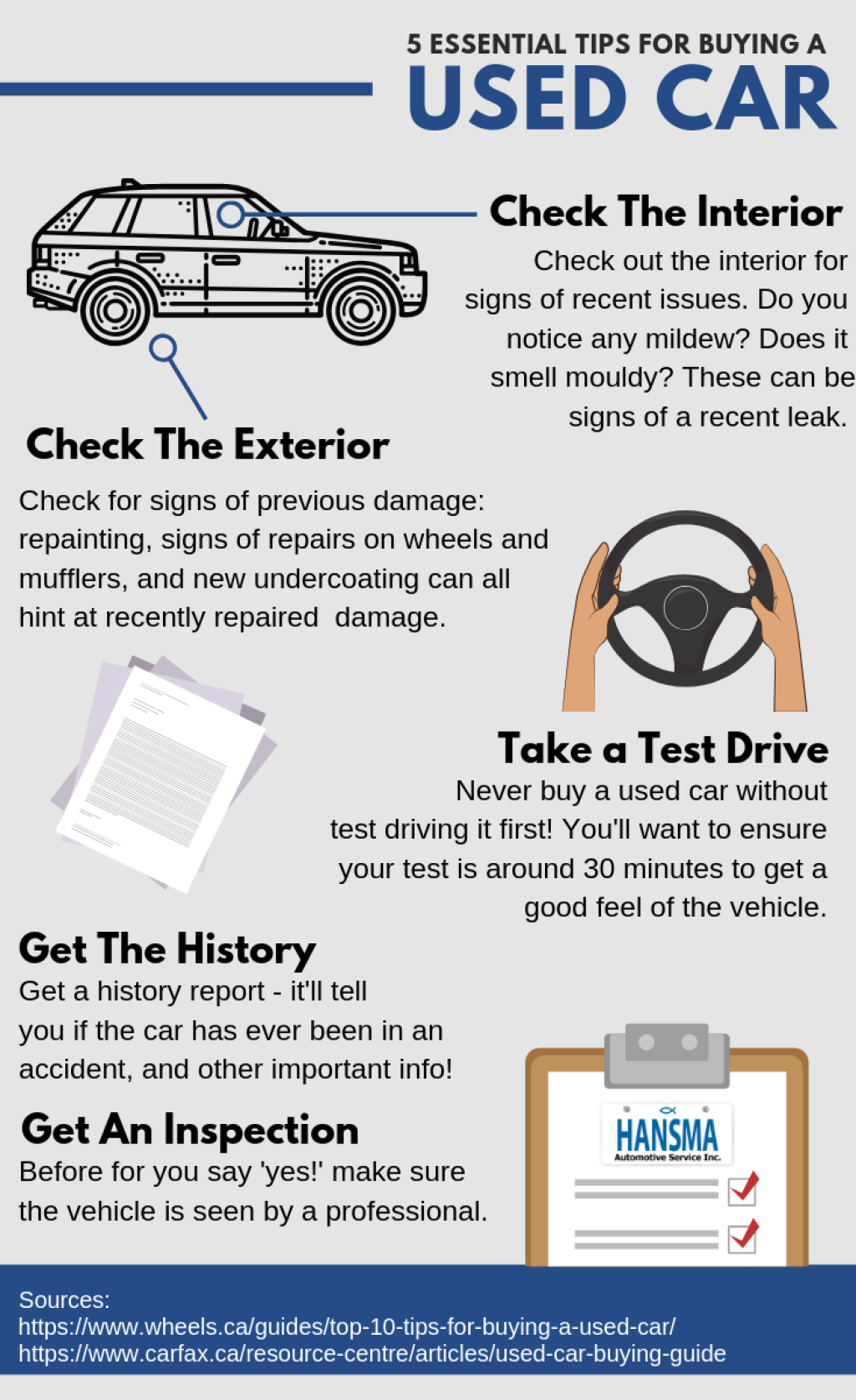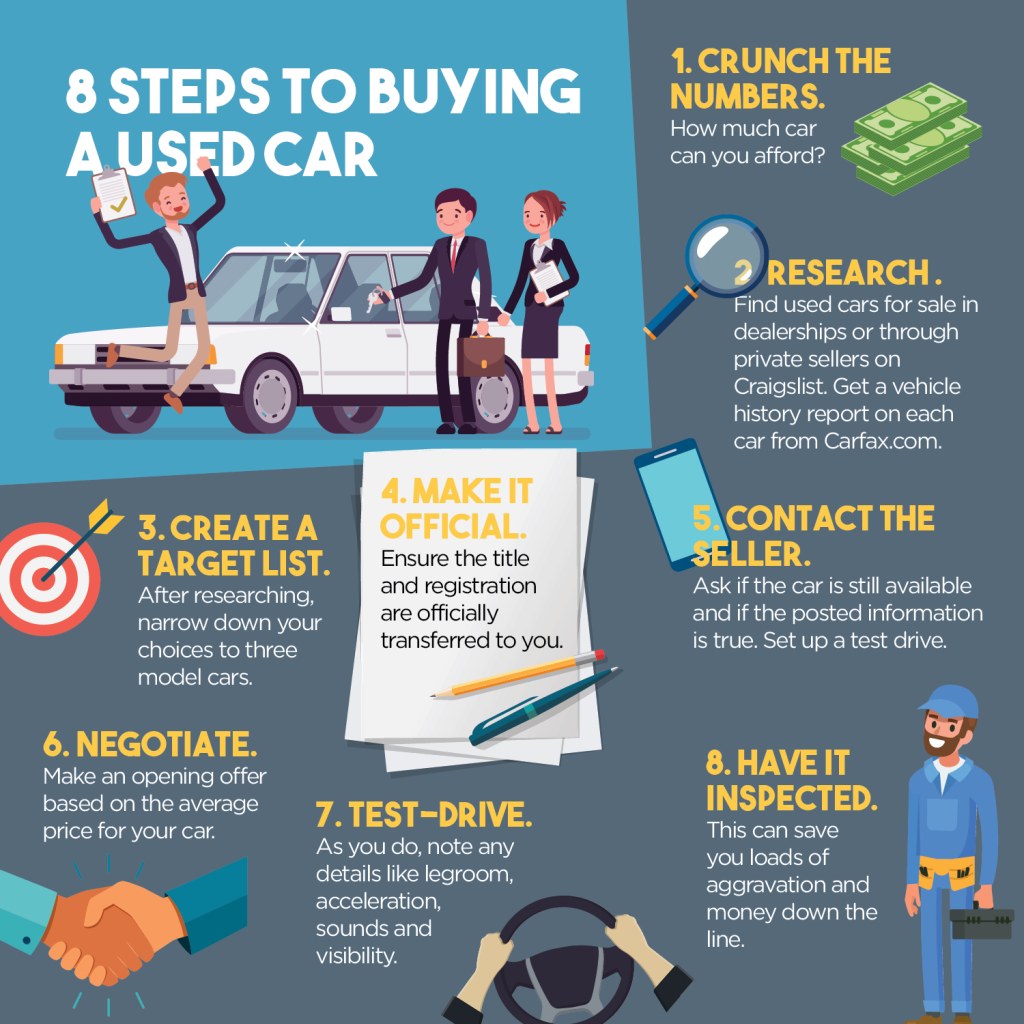Unlocking The Potential: Your Essential Guide On What To Do After Buying A Used Car
What to Do After Buying a Used Car: A Comprehensive Guide
Welcome, Car Enthusiast! Congratulations on your recent purchase of a used car. Now that you have made this investment, it’s important to know what steps to take to ensure the vehicle’s longevity and your safety. In this article, we will guide you through the essential things to do after buying a used car, providing you with valuable information and practical advice. So, let’s get started!
1. Gathering Information about the Vehicle
2 Picture Gallery: Unlocking The Potential: Your Essential Guide On What To Do After Buying A Used Car


Before diving into any specific maintenance tasks, it is crucial to gather all the necessary information about your newly acquired used car. Start by familiarizing yourself with the owner’s manual, as it contains vital details about the vehicle’s features, maintenance requirements, and recommended service intervals. Additionally, ensure that you have the vehicle’s registration and insurance documents in order.
2. Checking the Vehicle’s History

Image Source: squarespace-cdn.com
Knowing the history of a used car is essential in understanding its condition and potential issues. Obtain a vehicle history report, which will provide you with crucial information such as previous accidents, title status, mileage records, and service history. This report will give you insights into the car’s past and help you make informed decisions about its future maintenance.
3. Inspecting the Exterior and Interior
Now it’s time to thoroughly inspect both the exterior and interior of the used car. Examine the body for any signs of rust, dents, or scratches. Check the tires for tread wear and ensure they are properly inflated. Inside the vehicle, inspect the upholstery, dashboard, and controls for any damage or malfunctioning parts. Don’t forget to test all the lights and signals as well.
4. Performing a Mechanical Check

Image Source: myzing.com
A crucial step in ensuring the reliability of your used car is to have a mechanic perform a comprehensive inspection. This inspection will include checking the engine, transmission, brakes, suspension, and other vital components. The mechanic will be able to identify any existing or potential issues and provide you with a detailed report. Addressing these problems early on can save you from costly repairs in the future.
5. Getting Necessary Repairs and Maintenance
Based on the mechanic’s inspection report, prioritize and address any necessary repairs or maintenance tasks. This may include changing fluids and filters, replacing worn-out parts, and performing routine maintenance such as oil changes and tire rotations. By taking care of these crucial tasks, you can ensure the optimal performance and longevity of your used car.
6. Updating Ownership and Insurance
After purchasing a used car, it is essential to update the vehicle’s ownership details and insurance policy. Visit your local Department of Motor Vehicles (DMV) to transfer the vehicle’s title into your name. Additionally, inform your insurance provider about the new car and make sure it is properly insured. This step is crucial to protect yourself and comply with legal requirements.
7. Maintaining a Regular Maintenance Schedule
Lastly, make sure to establish and maintain a regular maintenance schedule for your used car. Refer to the owner’s manual for the recommended service intervals and follow them diligently. Regular maintenance, including oil changes, filter replacements, and inspections, will keep your vehicle in top shape and prevent major issues from arising.
What, Who, When, Where, Why, and How of What to Do After Buying a Used Car
What:
After buying a used car, there are several crucial steps and considerations to ensure your vehicle’s reliability and your safety.
Who:
This guide is essential for anyone who has recently purchased a used car and wants to know the necessary actions to take for proper maintenance and ownership transfer.
When:
These steps should be taken immediately after purchasing the used car to address any existing issues and set the foundation for proper maintenance.
Where:
The recommended actions can be done at a trusted mechanic’s workshop, local Department of Motor Vehicles (DMV), and any other location suitable for vehicle maintenance and paperwork.
Why:
Performing these actions will ensure the reliability of your used car, extend its lifespan, and maintain your safety on the road.
How:
Follow the comprehensive guide provided in this article, which includes gathering information, checking the vehicle’s history, inspecting the exterior and interior, performing a mechanical check, getting necessary repairs and maintenance, updating ownership and insurance, and maintaining a regular maintenance schedule.
Advantages and Disadvantages of Buying a Used Car
Advantages:
1. Cost savings: Used cars are generally more affordable than new cars, allowing you to get a better vehicle for your budget.
2. Lower depreciation: Used cars have already experienced the majority of their depreciation, meaning you won’t see a significant drop in value like with a new car.
3. Lower insurance costs: Insurance premiums are often lower for used cars compared to new ones.
4. Variety of options: When buying used, you have access to a wide range of makes, models, and years, offering more choices to suit your preferences.
5. Established reliability: If a used car has a good track record for reliability, you can have confidence in its performance.
Disadvantages:
1. Higher maintenance costs: Used cars may require more frequent repairs and maintenance, which can add up over time.
2. Limited warranty coverage: Depending on the age and mileage of the used car, the remaining warranty coverage may be limited or nonexistent.
3. Unknown history: Unlike new cars, the history of a used car may be unknown, making it important to perform thorough inspections and obtain a vehicle history report.
4. Outdated technology: Older used cars may lack the latest technological features and safety advancements found in newer models.
5. Potential hidden issues: Despite inspections, there is always a risk of hidden issues that may only become apparent after purchasing the used car.
Frequently Asked Questions (FAQ)
1. Can I return a used car if I’m not satisfied with it?
No, a used car purchase is typically considered final, and returning it solely based on dissatisfaction is uncommon. It’s crucial to thoroughly inspect and test-drive the vehicle before making a purchase decision.
2. Should I buy an extended warranty for my used car?
It depends on the specific circumstances and the vehicle’s reliability. Extended warranties can provide added peace of mind, especially for older used cars with higher mileage. Consider the coverage, cost, and your risk tolerance when deciding on an extended warranty.
3. How often should I have my used car serviced?
Refer to the owner’s manual for the manufacturer’s recommended service intervals. Generally, regular maintenance should be performed every 5,000 to 7,500 miles or every six months, whichever comes first.
4. Can I negotiate the price of a used car?
Yes, negotiating the price of a used car is common. Do your research on the car’s market value and compare prices from different sellers to negotiate a fair price.
5. What should I do if I discover hidden issues after buying a used car?
If you discover hidden issues after purchasing a used car, contact the seller as soon as possible to discuss the situation. Depending on the circumstances, you may be able to negotiate repairs or a partial refund.
Conclusion
By following these comprehensive steps after buying a used car, you can ensure its reliability, extend its lifespan, and prioritize your safety on the road. Remember to gather all necessary information, inspect the vehicle thoroughly, address any necessary repairs, and maintain a regular maintenance schedule. With proper care, your used car can serve you well for many years to come.
Final Remarks
Buying a used car is an exciting endeavor, but it comes with responsibilities. This article has provided you with a detailed guide on what to do after buying a used car, covering essential aspects of ownership, maintenance, and safety. Keep in mind that regular maintenance, thorough inspections, and prompt addressing of any issues are key to enjoying the benefits of your used car. Drive safely and enjoy the journey!
This post topic: Used Car

